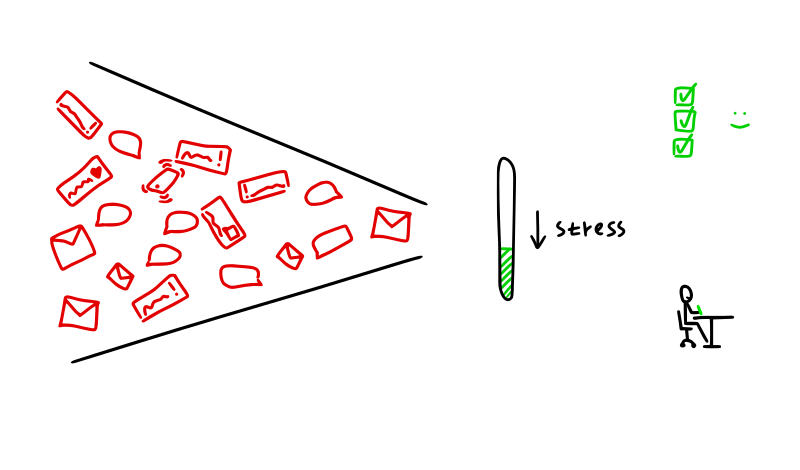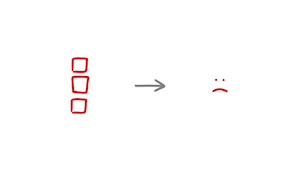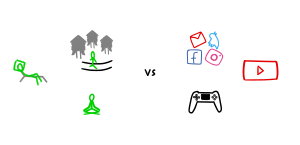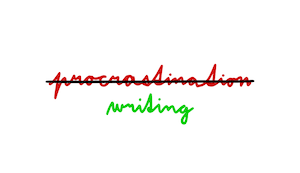How to recover from addiction
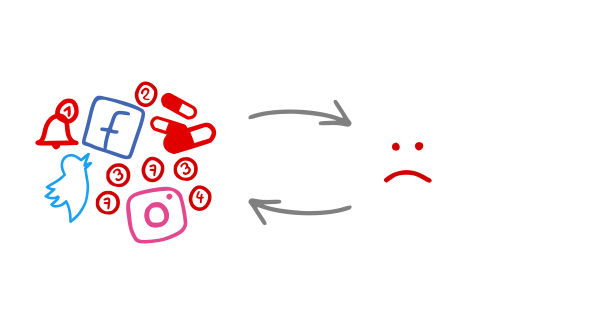
This 3rd part assumes that you’re dealing with a behavioral addiction and that you’ve read the previous two parts - part 1 and part 2. Be sure to check them out.
Imagine you could have a perfect step-by-step guide you could simply follow and it would mean successful recovery from addiction.
Well, nothing like this exists.
However, while there isn’t a perfect plan, there are some simple principles and steps that can help you on your path to recovery.
Please, use your own common sense and if something just isn’t working for you, don’t do it. This guide assumes you’re dealing with behavioral addictions (internet, smartphone, porn, video games). If you’re dealing with substance use disorder, this post might not be for you.
Take your time reading this, check the links to get a better understanding of addiction.
It won’t be easy but it’s definitely worth it to get to be free of addiction.
Before we begin, let’s make something clear:
Recovery is a word that has a lot of emotional baggage attached to it.
You don’t really recover from addiction. Instead, you become free of addiction.
The word recovery often leads to thinking that you have to postpone living until you’ve recovered. But it’s the other way around - you start to live, build a fulfilling life and then you become free of addiction - you become “recovered”.
Recovery supposes that you’re sick and you’re going back to normal. In reality, when you become free of addiction you’ll most likely feel better than before.
Because to become free of addiction, you have to develop emotional skills and improve your life. Former addicts usually have a better outlook on life because they’re grateful for overcoming the addiction and they know the difference.
So this is a step-by-step process to become free of their addiction:
- 1. Understand what is addiction
- 2.1 Realize why you want to change
- 2.2 (Optional) Come to the conclusion you don’t want to be doing it anymore
-
3. Combine these 3 steps:
- 3.1 Stop the compulsive behavior
- 3.2 Build a life without the addiction
- 3.3 Improve your emotional abilities
- 4. (Optional) Engage in the addictive behavior in a healthy way
1. Understand what is addiction
Understanding addiction is the foundation for becoming free of addiction.
Getting a precise understanding will help you debunk a lot of misinformation around the topic of addiction. Additionally, it can help you overcome negative assumptions you’ve associated with addiction.
You will also start thinking about why you became addicted in the first place.
We covered it here and here. After you read it, you probably should have a really good understanding of what addiction is and that you can recover from it.
To quickly summarize, addiction is a learned way of coping with negative emotions. This coping mechanism changes your brain in a way that makes you crave the addictive behavior. You can unlearn this coping mechanism and your brain will slowly change once again, though it might be tough.
2.1 Realize why you want to change and commit to it
This is highly individual. You have to get there by yourself. A lot of people stay in denial about their addiction. When they do, it’s almost impossible to change because they don’t regard it as a problem.
It’s often said that an addict has to hit the rock bottom to want to change. For example:
Addicted to porn → erectile dysfunction
Addicted to social media → low self-esteem, being anxious, comparing yourself to others all the time → leading to breakdown
Addicted to video games → your significant other leaves you
Having to deal with negative consequences might be a great motivator but it’s not the only way.
Your life doesn’t have to be in shambles to want to change. Sometimes just seeing glimpses of what is coming if you don’t stop the addiction can be enough.
If you want to explore what addiction could cause if you continue along the path, think about this:
- Come up with 5 consequences if you continue being addicted
- Come up with 5 benefits that would happen if you stopped being addicted
Please, sit down, think about it and write it down. By writing it down, you will ensure that your thought process is clear.
We’ve talked about the reasons to stop surfing mindlessly. Here’s why the internet addiction is real.
If you struggle with playing video games too much, read this.
Let’s say you now know why you want to stop with the addictive behavior. The next step is to commit to it in some way:
Start writing a diary about this.
Tell a close friend.
Go to therapy.
Post on the Internet about this.
Join a challenge.
This will help you stay accountable. Without this, you might lose track and go back to the state of unthinking unrestrained behavior.
2.2 (Optional) Come to the conclusion you don’t want to be doing the behavior anymore
We’ve covered it extensively here, but the gist of the idea is this:
If you realize that the addictive behavior is usually a false promise of satisfaction that is ultimately empty, quitting the addiction is much easier. We almost always imagine the addictive behavior to be much better than it is in reality. It makes sense because our brain is wired to think this. We remember it as so good but then when we’re doing it, it’s not as fun as it used to be. E.g. Surfing the internet.
Once you see through this illusion, you won’t feel such a strong pull towards the addictive behavior anymore.
On the other hand, if you still desire to do the behavior, quitting is much more difficult. It’s like you’re banning yourself from something and you will have to keep fighting these battles between discipline and desire.
You have to come to this conclusion by yourself. It might take you sometime (days, weeks, months, or even years) of discontent to finally decide. Sometimes this realization comes only after you’ve quit because you can suddenly see all the negatives that it caused you in your life. We recommend writing it down.
Combine the next 3 steps together: 3.1 + 3.2 + 3.3.
3.1 Stop the compulsive behavior
If you have followed the previous steps, you have done a lot of work already. Now, the next step in becoming free of addiction is to stop the compulsive behavior.
In the case of checking your phone impulsively, it might look difficult right now, but consider that you wired your brain around 50 times per day to pick up your phone. It’s a strong habit.
Luckily, neuroplasticity can take place.
We call it the Resistance Rule:
Every time you resist doing the behavior, you rewire your brain. It will get easier and easier over time.
You have to rewire your brain a bit by bit.
The Resistance Rule can be used for scrolling your phone, binge watching a Netflix show, or watching Twitch for 8 hours. Whenever you resist the behavior or stop it after a healthy amount, you change your brain a little bit.
It's the same as refocusing on your breath after your attention has wandered off during breathing meditation. By refocusing, time and time again, your ability to concentrate improves.
Having this simple rule isn’t usually enough. You probably have to change your behavior much more.
We recommend doing a dopamine detox challenge: We’ve covered it here generally (Dopamine detox) and here for the video games (How to quit video games)
There are two basic approaches:
- Quitting cold turkey
- Cutting down (also trying to moderate)
Each has its own pros and cons.
Quitting cold turkey
In behavioral addictions, if you can quit cold turkey, it’s probably the better choice.
It’s definitely simpler.
No decision making required. Not using Instagram means not using Instagram.
One important point is thatit doesn’t have to be forever. You quit cold turkey to step back, to reset your relationship with the addictive behavior.
This is especially true with addictions related to the Internet. Radical change is often the better choice because with Internet addictions, the compulsivity is high and availability is ever-present.
Ideally, you want to commit to a challenge to quit cold turkey for a certain amount of time. Quitting something forever sounds scary, but quitting something for a few weeks is simply a challenge. You can then come back.
Set up a streak
If you decide to go this route, it’s a good idea to set up a streak of days since you quit (in an app, on paper).
Streaks help you keep your goal in sight. Also, if you get a good run of days, you start feeling momentum going and it keeps you motivated to keep the streak.
However, streaks can become a trap
Firstly,abstinence isn’t recovery. Achieving a certain number of days won’t cure you of your addiction, just like achieving a certain streak on Duolingo doesn’t mean that you know the language.
This is the faulty promise of the 90 day challenge of no surf/fap/gaming. It’s easy, simply don’t play games for 90 days and you won’t be addicted anymore. These challenges give you room to breathe but it’s up to you to build a better life and learn to better deal with your emotions in those 90 days. If you don’t, then you’ll likely go right back to the addictive behavior.
Secondly, they can be self defeating. Especially, when you can’t get a good streak going, it can be frustrating and you feel like a failure. If you find yourself to constantly restart your streaks, it might be time for the cutting down option.
Cutting down
There are activities you might be addicted to that you can’t quit without consequences:
- Messaging
- Generally looking up things online
We think that it’s a good idea to combine the cold turkey approach with this one. Cold turkey for things you don’t need that are optional, and cutting down by creating rules for things that aren’t optional. This is especially good if you’re generally addicted to the Internet, browsing, consuming useless information, and hopping from one site to another.
The best way to cut down on undesirable behavior is to set rules for yourself. Once again, it’s a good idea to set the rules temporarily, so you don’t have to worry because you can always come back to the behavior after the challenge ends.
The first step here is to find the worst offenders that you can’t remove from your life.
Decide whether you really have to use the service (email, Messenger, Twitter,...) for the duration of the challenge. If you do really need them, be creative about how you can restrict them.
Set time limits of how long you can use them.
Set time windows when you can use them.
Get them off your phone and to your laptop where you can easily control them.
Set up streak
Streaks in trying to cut down are unviable. In this case, it’s better to create a spreadsheet to track the addictive behavior. You’re trying to lower the usage and tracking works in this case.
Even small improvements are a win. With streaks, you either followed the behavior, or you failed.
—
Any choice you make, you can expect withdrawal. With the behavioral addictions, you will probably be more bored, more anxious. This withdrawal can last for days or weeks but it will soon get easier. And it will definitely make you happier. Also, don’t expect you’ll be magically cured. You need to build a better life for addictions to be less attractive.
3.2. Build a better life without the addiction
Whatever route you decided to take to stop the compulsive behavior, you now have space to breathe. Now it’s up to you to create a better life.
First, running towards something is easier than simply running away from your addiction. That’s why we think that you should choose your new addiction. You decide to build something, or learn a new skill - to fill all the free time you now have.
Second, if you don’t build a life that’s more satisfying, you’ll probably be back in the addictive behavior in no time. Or if you don’t change the things that led you to the addiction in the first place, it will be difficult.
Then the question to answer is:
What needs does the addiction fulfill for you?
For example:
Playing DOTA might mean that you’re not intellectually challenged at your work or school
Compulsively watching favorite Youtuber might mean that you feel alone or that you’re looking for a community
Binge watching Netflix shows might mean that your life is boring and you look for excitement elsewhere
Answering this question for yourself can help you identify where you should probably begin:
- Learning new skills
- Pick up a new hobby
- Taking a new challenge
- Social life - becoming a part of a community
People often make the 1st mistake here. They try to be productive immediately. Even though they probably were doing the addictive behavior to relax.
Realize that you can’t be productive all the time… and when you’re not you need to adjust what kind of entertainment you seek - we call this pursuing high-quality leisure.
Because otherwise, it leads to the 2nd kind of mistake. People hop from one kind of addiction to another.
You stop playing video games and start watching Twitch.
You quit social media but start reading discussions on forums and news.
You stop checking your phone and instead check the same sites on your laptop.
Instead, find higher-quality entertainment that doesn’t destroy your attention span:
Read books.
Listen to music.
Go for a walk with a friend.
Watch a movie - but in the cinema.
Watch a drama - but in the theater.
Don’t play videogames - play board games with friends instead.
Being outside is preferred. Being with other people isn’t required but definitely recommended. Staring at screens isn’t, especially if you do that for work.
Then the next good thing is to look at the basics:
Taking care of your hygiene.
Cleaning your place.
Taking care of your body - losing weight, building muscle.
Cooking your own food.
Fixing or improving your place.
If you were shirking any of these because of your addictions, it’s time to start working on them.
Here’s a good checklist you can use.
3.3. Improve your emotional abilities
After all, addiction is a symptom of emotional immaturity.
Someone might suggest that improving your emotional abilities will fix the addiction problem. However, we consider it almost impossible to improve your emotional abilities without stopping the compulsive behavior and building a better life. We don’t think sitting down and thinking will lead. Creating something, building your abilities leads to high self-esteem. Action resolves a lot of the problems.
So alongside these 2 previous steps, you want to build your emotional toolbox.
How to go about that?
The 2 basic things you want to start working on:
- Learn to sit with your emotions
- Learn not to act on your emotions
We’re still researching this topic, be sure to subscribe to get it when it’s ready.
How to do that?
2. Block out input-free time - be alone with your own thoughts, not listening to anything, not watching anything particular
3. Start writing a journal
These three practices will help process your thoughts and you will realize you even feel emotions. They are basic tools but also the lowest hanging fruit that can help you realize so many things. Most people try to avoid these thoughts and ruminations about their life and keep themselves entertained all the time to escape having to deal with them.
Additionally, you probably want to capture your thoughts and feelings - journalling can help you do that. Sit down, write down whatever comes to your mind. What you did, what you didn’t do, what you’re thinking about, what you’re feeling right now… Writing your thoughts on paper will help you better understand what’s going on in your mind.
Then there are more professional tools:
- Self-hypnosis - start with this app
- Meditation - start with this app
- Signing up for therapy - probably best for dealing with childhood trauma
And there are also two philosophies of life that you can study and that help you get a new more calm outlook at life. Stoicism and Zen Buddhism.
Stoicism - the word stoic is associated with not feeling any emotions.
In reality, stoics were totally about different things:
You feel the emotions, but you don’t act on them.
You practice negative visualizations to appreciate the things you have.
You ask what’s the worst thing that could happen to dissect the fear you feel.
I admit I have no experience with Zen Buddhism and I don’t want to butcher the philosophy by misrepresenting it here. If you want to get a glimpse of what it’s about Zen in the Art of Archery is a good (and very short) book to read.
(Optional) 4. - Engage in the addictive behavior in a healthy way
This is totally optional but we see it as a path to mastery and freedom. Engaging the addictive behavior again is unnecessary for certain things (like smoking) but it’s helpful for plenty of others (surfing the Internet).
People often realize that addiction was really a symptom of something else. When they fix their life they stop surfing mindlessly. When life is good, you see no point in watching Twitch or Youtube for 8 hours straight. When your self-esteem is healthy, Instagram isn’t a place to cause you anxiety but instead a good way to stay connected.
To get to that level:
- Let enough time pass without doing the addictive behavior or restricting it - depending on how much you were addicted, it will take months or even a few years
- Build a better life
- Build your emotional toolbox
So when you meet these 3 conditions, you might be able to test out whether you’re still addicted. Become a scientist about it.
Summary
So this is how one becomes free of their addiction:
- 1. Understand what is addiction
- 2.1 Realize why you want to change
- 2.2 (Optional) Come to the conclusion you don’t want to be doing it anymore
-
3. Combine these 3 steps:
- 3.1 Stop the compulsive behavior
- 3.2 Build a life without the addiction
- 3.3 Improve your emotional abilities
- 4. (Optional) Engage in the addictive behavior in a healthy way
Knowing these steps can help you navigate through all this. It won’t be easy but it’s worth being free of addiction. We can promise you that.
